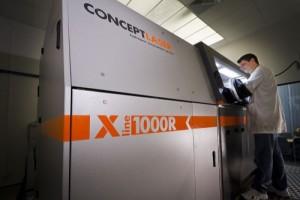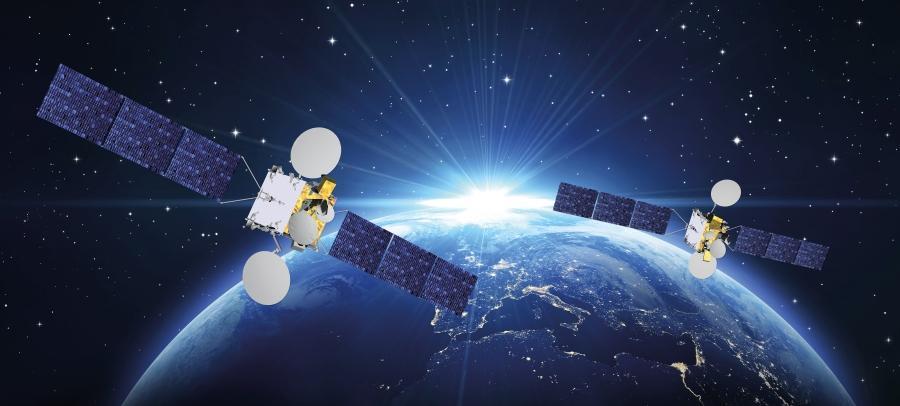 So far 2015 has been the year of 3D printed metal components in space, first SpaceX and NASA started testing them for rocket engines and now two Korean satellites will be launched into orbit with metal 3D printed components. The Koreasat 5A and Koreasat 7 telecommunications satellites are currently under construction by Thales Alenia Space (TAS), an aerospace manufacturer started as a joint venture between French and Italian companies. The satellites will include a large antenna support structure that was 3D printed in aluminum.
So far 2015 has been the year of 3D printed metal components in space, first SpaceX and NASA started testing them for rocket engines and now two Korean satellites will be launched into orbit with metal 3D printed components. The Koreasat 5A and Koreasat 7 telecommunications satellites are currently under construction by Thales Alenia Space (TAS), an aerospace manufacturer started as a joint venture between French and Italian companies. The satellites will include a large antenna support structure that was 3D printed in aluminum.
 The 3D printed telemetry and command antenna supports measure about 17.7 x 15.7 x 8.2 inches (45 x 40 x 21 cm) and are regarded as the largest ever fabricated using additive manufacturing technology in all of Europe. The parts were made using a powder bed additive manufacturing process that uses a high powered laser to melt metal powder into three-dimensional shapes. TAS printed the parts using the Concept Laser Xline 1000R 3D printer, widely considered one of the largest selective laser melting printers throughout Europe. The Xline 1000R was supplied by Poly-Shape, a French company that partnered with Thales Alenia Space to produce cost-saving, 3D printable metal components.
The 3D printed telemetry and command antenna supports measure about 17.7 x 15.7 x 8.2 inches (45 x 40 x 21 cm) and are regarded as the largest ever fabricated using additive manufacturing technology in all of Europe. The parts were made using a powder bed additive manufacturing process that uses a high powered laser to melt metal powder into three-dimensional shapes. TAS printed the parts using the Concept Laser Xline 1000R 3D printer, widely considered one of the largest selective laser melting printers throughout Europe. The Xline 1000R was supplied by Poly-Shape, a French company that partnered with Thales Alenia Space to produce cost-saving, 3D printable metal components.
While the satellite parts are being integrated into two different types of communication satellites, the parts themselves are identical and were 3D printed as part of a single batch by the same machine. The antenna supports feature an innovative bio-design that has just passed all of its vibration acceptance tests, which were employed to demonstrate the reproducible dynamic behavior of 3D printed metal parts. Tests to determine the shear strength and part solidity are vital to proving the reliability and dependability of metal 3D printing, especially in regards to space travel and viability in highly taxing applications and environments.
 With the successful fabrication and installation of these components, TAS has provided some key data proving the benefits of incorporating metal 3D printing processes into their spacecraft manufacturing workflow. Because parts made using a powder bed additive manufacturing process are capable of producing highly complex geometries impossible using traditional methods, TAS was able to reduce the component part weight by nearly 22%. Metal 3D printing these large components also eliminated between one to two months from the production schedule and offered a 30% saving on fabrication costs.
With the successful fabrication and installation of these components, TAS has provided some key data proving the benefits of incorporating metal 3D printing processes into their spacecraft manufacturing workflow. Because parts made using a powder bed additive manufacturing process are capable of producing highly complex geometries impossible using traditional methods, TAS was able to reduce the component part weight by nearly 22%. Metal 3D printing these large components also eliminated between one to two months from the production schedule and offered a 30% saving on fabrication costs.
While the new antenna support structures are currently the largest 3D printed parts included on a satellite constructed by TAS, they have previously included similar parts on other satellites. Since April 2015 the TurkmenAlem satellite also built by TAS has included comparable antenna supports. Additionally, the Arabsat 6B satellite will include 3D-printed tripod components, and is scheduled to be launched from the Guiana Space Center located in French Guiana next month.
Thales Alenia Space is seeking to completely transform their industrial capabilities by integrating additive manufacturing into several steps of their workflow, including rapid prototyping and final part production. The company considers metal 3D printing an indispensable step required to meet new market demands in regards to cost and crucial deadlines. 3D printing is only one of the high-tech advances that the company is working to their production process, including other emergent technologies like advanced robotics and collaborative robotics often called “cobotics.”
Discuss this story in the 3D Printings Korean Satellites Forum thread on 3DPB.com.
Subscribe to Our Email Newsletter
Stay up-to-date on all the latest news from the 3D printing industry and receive information and offers from third party vendors.
You May Also Like
Gorilla Sports GE’s First 3D Printed Titanium Cast
How do you help a gorilla with a broken arm? Sounds like the start of a bad joke a zookeeper might tell, but it’s an actual dilemma recently faced by...
Nylon 3D Printed Parts Made More Functional with Coatings & Colors
Parts 3D printed from polyamide (PA, Nylon) 12 using powder bed fusion (PBF) are a mainstay in the additive manufacturing (AM) industry. While post-finishing processes have improved the porosity of...
$25M to Back Sintavia’s Largest Expansion of Metal 3D Printing Capacity Since 2019
Sintavia, the digital manufacturing company specializing in mission-critical parts for strategic sectors, announced a $25 million investment to increase its production capacity, the largest expansion to its operations since 2019....
Velo3D Initiates Public Offering in a Bid to Strengthen Financial Foundations and Drive Future Growth
Velo3D (NYSE: VLD) has been among a number of publicly traded 3D printing firms that have attempted to weather the current macroeconomic climate. After posting a challenging financial report for 2023,...































